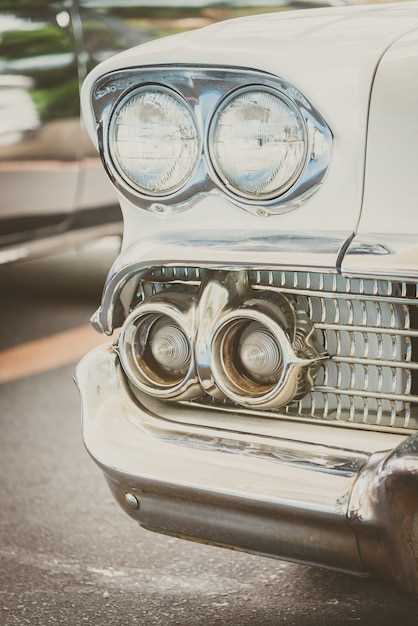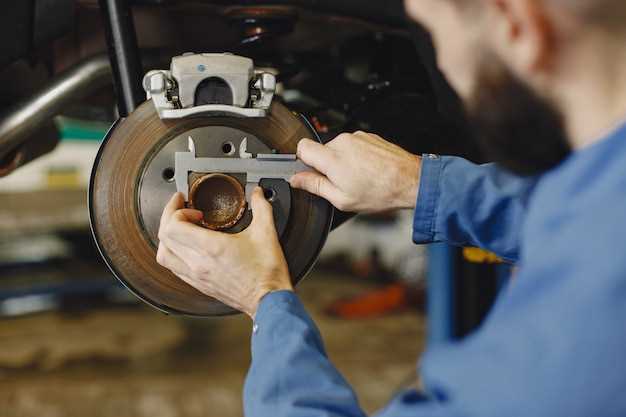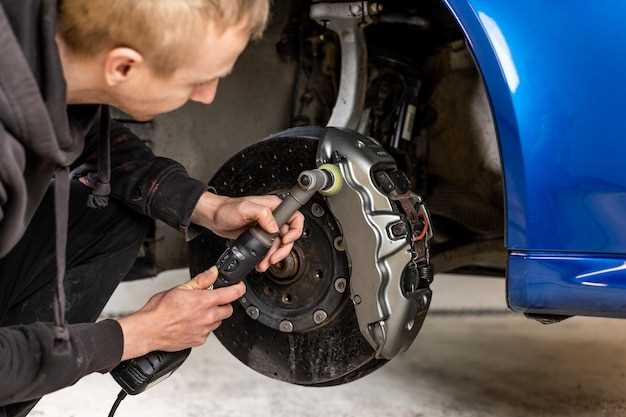
For classic car enthusiasts, the charm of vintage vehicles often comes with certain compromises, particularly in safety and performance. One of the most critical areas that can significantly enhance both is the brake system. Upgrading to modern brake systems not only improves stopping power but also ensures a safer driving experience in today’s fast-paced traffic.
The original brake systems in classic cars were designed for a different era, lacking the advanced technology and materials that modern systems offer. Brake upgrades can include everything from disc brake conversions to advanced anti-lock braking systems (ABS). These enhancements provide better heat dissipation, improved feel, and more consistent performance under various driving conditions, effectively transforming a classic vehicle’s handling dynamics.
Implementing these upgrades requires careful consideration of several factors, including compatibility with existing components, the intended use of the vehicle, and the overall aesthetic. Classic car owners can maintain the integrity of their cars while incorporating modern safety features, contributing to both performance and peace of mind. Embracing brake upgrades is not just about safety; it’s about enhancing the overall driving experience while preserving the timeless allure of classic automobiles.
Choosing the Right Modern Brake Components for Your Classic Car

Upgrading the brake system of a classic car is essential for enhancing safety and performance. Selecting the right modern brake components can significantly improve stopping power and overall driving experience. Here are key factors to consider when making this choice.
1. Understand Your Classic Car’s Specifications
Before choosing brake components, familiarize yourself with the original specifications of your classic vehicle. Consider aspects like the size of the wheels, the weight of the car, and current braking performance. This foundational knowledge will guide your upgrades and ensure compatibility.
2. Choose the Right Type of Brake System
Modern brake systems can be classified into two main types: disc and drum. Many classic cars originally came with drum brakes. Upgrading to disc brakes generally provides better performance due to improved heat dissipation and stopping power. Consider a conversion kit if you prefer the benefits of modern disc brakes.
3. Select High-Quality Brake Components
Invest in high-quality components such as calipers, rotors, pads, and brake lines. Look for reputable brands that specialize in performance upgrades. Quality parts not only enhance the performance but also ensure longevity and reliability. Upgrades like stainless steel brake lines can offer better response and durability.
4. Consider Performance Needs
Evaluate your driving habits and needs. If you plan to drive your classic car primarily on the street, consider balanced upgrades that provide stability and comfort. However, if you aim to enhance performance for track days or spirited driving, opt for components designed for high performance, such as performance rotors and high-friction brake pads.
5. Don’t Overlook the Master Cylinder
When upgrading brakes, it’s vital to also assess the master cylinder. A more powerful braking system often requires a master cylinder with greater capacity. Ensure that the master cylinder matches the upgraded components for optimal function. This alignment will improve brake pedal feel and performance.
6. Pay Attention to Brake Fluid
With modern brake components, it’s important to use fluid that suits the upgraded system. High-performance brake fluids offer higher boiling points and greater resistance to moisture absorption. This change can prevent brake fade during intense driving and ensure consistent performance.
7. Professional Installation
If you’re not confident in your mechanical skills, consider having the upgrades professionally installed. Trained technicians have the expertise to ensure that everything is fitted properly, which is crucial for the brake system’s effectiveness and safety. Proper installation reduces the risk of malfunction or failure.
By carefully considering these factors, you can make informed decisions on modern brake upgrades. Enhancing your classic car’s brake system will not only elevate its performance but also offer improved safety for you and your passengers.
Step-by-Step Guide to Retrofitting Modern Brakes

Upgrading the braking system of a classic car is essential for improved safety and performance. This guide provides a clear roadmap to successfully retrofit modern brakes into vintage vehicles.
Step 1: Assess Your Current Braking System
Begin by evaluating the existing brake components. Identify the type of brakes (drum or disc), check the condition of the brake lines, master cylinder, and overall compatibility with new parts. This evaluation will help determine necessary modifications.
Step 2: Research Modern Brake Options
Look into aftermarket brake kits designed for your specific classic car model. Options often include disc brake conversions, high-performance calipers, and larger rotors. Select a kit that matches your driving needs and aesthetic preferences.
Step 3: Gather Tools and Materials
Collect all required tools such as wrenches, sockets, a jack, and safety equipment. Ensure that you also have the modern brake components, including calipers, rotors, and any additional hardware specified by the manufacturer.
Step 4: Safely Lift the Vehicle
Use a reliable jack to lift the car and support it with jack stands. This ensures safe access to the brakes and suspension components during the retrofit process.
Step 5: Remove the Old Brake Components
Carefully detach the existing brake system. This includes removing the wheels, calipers, rotors, and, if necessary, the master cylinder. Take note of the order of disassembly, as it will help during reinstallation.
Step 6: Install Modern Brake Components
Follow the manufacturer’s instructions to install the new braking system. Attach new rotors and calipers, ensuring they are properly aligned and secured. If using a new master cylinder, connect it according to the schematic provided with the brake kit.
Step 7: Bleed the Brakes
Once everything is installed, it’s crucial to bleed the brake system to remove any air bubbles from the lines. This step is vital for ensuring proper brake performance and responsiveness.
Step 8: Test the Braking System
Before hitting the road, conduct a thorough test. Check the pedal feel, listen for any unusual noises, and ensure the vehicle stops smoothly and effectively. It’s advisable to perform a test drive in a safe area to verify that the retrofitted system performs as expected.
Step 9: Fine-Tuning and Adjustment
After initial testing, you may need to make adjustments for optimal performance. This could involve adjusting the brake balance, ensuring proper alignment, or tweaking the hydraulic system for improved responsiveness.
Step 10: Regular Maintenance
With the modern brake system in place, implement a regular maintenance schedule. Inspect the brakes periodically, check for wear, and replace components as needed to maintain safety and performance.
Retrofitting modern brakes enhances the driving experience of classic cars significantly. Following these steps ensures a successful upgrade that blends classic aesthetics with modern safety standards.
Common Challenges and Solutions During Brake Upgrades
Upgrading the brake system of a classic car can significantly enhance its performance and safety. However, this process may present several challenges that enthusiasts need to address effectively.
One of the most common challenges is ensuring compatibility between new components and the existing system. Different vehicles may have unique configurations, making it essential to research and select brake components that fit properly. Solutions include using upgrade kits specifically designed for the make and model of the vehicle, which can streamline the installation process and mitigate compatibility issues.
Another challenge is the need for modifications to the chassis or suspension system to accommodate new brake sizes. Larger brake discs require specific wheel clearance and adequate space for calipers. This can be solved by consulting with professionals who can assess the vehicle’s structure and make the necessary adjustments or recommendations for suitable wheel options.
Heat management is also a factor, as upgraded brake systems generate more heat, which can affect performance. Installing high-quality brake lines and ventilated rotors can help improve heat dissipation. Additionally, using performance brake pads designed to withstand higher temperatures can enhance overall braking efficiency.
Finally, the installation process itself can be daunting. Properly bleeding the brake lines after the upgrade is crucial for ensuring optimal brake performance. Utilizing a vacuum bleeder or enlisting assistance can simplify this task and ensure an effective installation, thus avoiding air pockets that could lead to brake failure.
By addressing these challenges with the right solutions, car enthusiasts can confidently upgrade the brake systems of their classic vehicles, ensuring enhanced safety and performance on the road.


